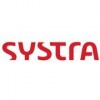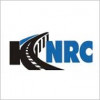Filter interviews by
Thejo Engineering Mechanical Engineer Interview Questions and Answers for Experienced
Thejo Engineering Mechanical Engineer Interview Experiences for Experienced
1 interview found
Interview Questionnaire
2 Questions
- Q1. What is the process of belt joint, width of belt, type of belt use ?
- Ans.
Belt joint process involves connecting two ends of a belt. Belt width and type depend on the application.
Belt joint process includes mechanical fasteners, vulcanization, and welding.
Belt width depends on the conveyor system's design and the material being transported.
Types of belts include flat belts, V-belts, timing belts, and ribbed belts.
Belt type depends on the application, load capacity, speed, and environment.
Com...
- Q2. What is difference between fluid coupling and scoop coupling?
- Ans.
Fluid coupling uses fluid to transmit power while scoop coupling uses air or gas.
Fluid coupling uses hydraulic fluid to transmit power while scoop coupling uses air or gas.
Fluid coupling is used in heavy machinery like cranes and excavators while scoop coupling is used in small machines like fans and blowers.
Fluid coupling provides smooth power transmission while scoop coupling provides jerky power transmission.
Fluid c...
Top trending discussions






Interview questions from similar companies

I applied via LinkedIn and was interviewed in Mar 2021. There was 1 interview round.
Interview Questionnaire
1 Question
- Q1. About material, Heat Exchangers designs, situations in which It will fail, type of HE handled.
Interview Preparation Tips

Mechanical Engineer Interview Questions & Answers
Ramky Infrastructureposted on 18 Feb 2023
I applied via Naukri.com and was interviewed in Aug 2022. There were 3 interview rounds.

(2 Questions)
- Q1. Are you know the batching plant erection and how many years of experience
- Ans.
Yes, I have experience in batching plant erection for 3 years.
I have worked on the erection of batching plants for 3 years
I am familiar with the process of setting up and installing batching plants
I have experience in troubleshooting and maintenance of batching plants
I have knowledge of the safety protocols and regulations related to batching plant erection
- Q2. Yes and 5 years above are preferred
(2 Questions)
- Q1. Why you are quite the present company
- Q2. Professional growth and working culture
Interview Preparation Tips

Mechanical Engineer Interview Questions & Answers
Oceaneering Internationalposted on 13 Jun 2024
I applied via Naukri.com and was interviewed before Jun 2023. There was 1 interview round.
(2 Questions)
- Q1. Define SFD ,BMD
- Ans.
SFD stands for Shear Force Diagram and BMD stands for Bending Moment Diagram in structural analysis.
SFD shows the variation of shear force along the length of a beam or structure.
BMD shows the variation of bending moment along the length of a beam or structure.
Both diagrams are essential for analyzing the internal forces in a structure.
They are commonly used in civil and mechanical engineering for designing and analyzi...
- Q2. Calculate Thrust forces for beam
- Ans.
Thrust forces for beams can be calculated using equations of equilibrium and considering external loads.
Calculate the sum of all external forces acting on the beam.
Determine the direction of the forces (compression or tension) based on the beam's support conditions.
Apply equations of equilibrium to calculate the thrust forces at different points along the beam.
Consider any distributed loads or moments that may affect t...

Electrical Engineer Interview Questions & Answers
Welspun Enterprisesposted on 20 Nov 2024
I applied via Company Website and was interviewed in Oct 2024. There were 2 interview rounds.
(2 Questions)
- Q1. Motor type, Pump lowering, ESR piping etc.
- Q2. Solar Specification
(2 Questions)
- Q1. Notice period is negotiable
- Q2. 30%hike on current ctc
Interview Preparation Tips

I applied via Walk-in and was interviewed in Feb 2022. There were 2 interview rounds.

(2 Questions)
- Q1. How to charge the Transformer?
- Ans.
A transformer can be charged by applying a voltage to its primary winding.
To charge a transformer, connect a power source to its primary winding
The voltage applied to the primary winding creates a magnetic field
This magnetic field induces a voltage in the secondary winding
The transformer is charged and ready to transfer power
- Q2. Parts of transformer
- Ans.
Parts of a transformer include the core, windings, and insulation.
Core: Provides a path for magnetic flux and is usually made of laminated iron or steel.
Windings: Consist of primary and secondary coils, which are wound around the core.
Insulation: Prevents electrical leakage and is used to separate the windings and core.
Tap changer: Allows for voltage regulation by changing the number of turns in the winding.
Cooling sys...
Interview Preparation Tips

I appeared for an interview before Feb 2024.
(2 Questions)
- Q1. What are the applications of motor starters?
- Ans.
Motor starters are used to control the starting and stopping of motors in various applications.
Motor starters help protect motors from overloads and short circuits.
They provide a convenient way to start and stop motors remotely.
Motor starters can also provide under-voltage and over-voltage protection to the motors.
Examples of applications include industrial machinery, HVAC systems, and water pumps.
- Q2. What are the fundamentals of the power triangle?
- Ans.
The power triangle represents the relationship between real power, reactive power, and apparent power in an AC circuit.
The power triangle is a visual representation of the relationship between real power (P), reactive power (Q), and apparent power (S) in an AC circuit.
Real power (P) is the actual power consumed by the circuit and is measured in watts (W).
Reactive power (Q) is the power that flows back and forth between...
Interview Preparation Tips

I applied via Recruitment Consulltant and was interviewed before Sep 2021. There were 2 interview rounds.

(2 Questions)
- Q1. Substation questions
- Q2. Primary engineering questions
Interview Preparation Tips

I applied via LinkedIn and was interviewed before Apr 2022. There were 2 interview rounds.

(2 Questions)
- Q1. ANY ONE electrical SOLAR WORK
- Q2. Solar work electrical maintenance

I applied via Monster and was interviewed before Oct 2020. There were 3 interview rounds.
Interview Questionnaire
3 Questions
- Q1. Do u know Electrical load calculation
- Ans.
Yes, electrical load calculation is the process of determining the amount of power that a building or electrical system requires.
Electrical load calculation involves considering the power requirements of various electrical devices and appliances in a building or system.
Factors such as voltage, current, and power factor are taken into account during the calculation.
Load calculation helps in determining the appropriate s...
- Q2. Site experince
- Q3. Achievement in carrer
- Ans.
Developed a new power distribution system for a large manufacturing plant, resulting in a 20% increase in efficiency.
Designed and implemented a new power distribution system for a large manufacturing plant
Collaborated with a team of engineers and technicians to ensure successful installation and operation
Resulted in a 20% increase in efficiency and significant cost savings for the company
Interview Preparation Tips
Thejo Engineering Interview FAQs
Some of the top questions asked at the Thejo Engineering Mechanical Engineer interview for experienced candidates -
Tell us how to improve this page.
Thejo Engineering Interviews By Designations
- Thejo Engineering Electrical Engineer Interview Questions
- Thejo Engineering Mechanical Engineer Interview Questions
- Thejo Engineering Engineer Interview Questions
- Thejo Engineering Senior Operator Interview Questions
- Thejo Engineering Senior Electrical Engineer Interview Questions
- Thejo Engineering Senior Technician Interview Questions
- Thejo Engineering Resident Manager Interview Questions
- Thejo Engineering Electrician Interview Questions
- Show more
Interview Questions for Popular Designations
- Mechanical Maintenance Engineer Interview Questions
- Diploma Mechanical Engineer Interview Questions
- Mechanical Technician Interview Questions
- Senior Engineer Mechanical Interview Questions
- Mechanical Supervisor Interview Questions
- Junior Mechanical Engineer Interview Questions
- Mechanical Fitter Interview Questions
- Mechanical Maintenance Fitter Interview Questions
- Show more
Mechanical Engineer Interview Questions from Similar Companies
Thejo Engineering Mechanical Engineer Reviews and Ratings
based on 14 reviews
Rating in categories
|
Mechanical Engineer
36
salaries
| ₹2.1 L/yr - ₹5.2 L/yr |
|
Electrical Engineer
23
salaries
| ₹2.8 L/yr - ₹5.5 L/yr |
|
Senior Engineer
18
salaries
| ₹3.6 L/yr - ₹6.3 L/yr |
|
Junior Engineer
18
salaries
| ₹2.7 L/yr - ₹3.5 L/yr |
|
Senior Technician
17
salaries
| ₹1.7 L/yr - ₹4 L/yr |

Simplex Infrastructures

Sterling & Wilson

Aarvee Associates

Nasser S. Al Hajri Corporation
- Home >
- Interviews >
- Thejo Engineering Interview Questions >
- Thejo Engineering Mechanical Engineer Interview Questions for Experienced











